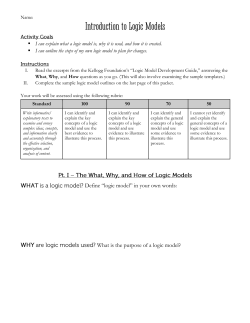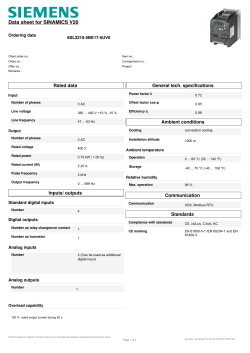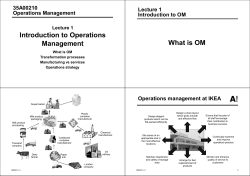
Section 3
Moving Into Action N CAPSTON OOL ET SECTIO Section 3 SEC TION TOOL 12: Putting it All Together – The Logic Model (Capstone Tool for Section 3 and the Guide as a whole) 3 What You Need to Complete This Tool: The Logic Model ties together all the work that came before in a succinct story of your entire financial capability services integration plan—what you will do, what resources it will require, and, most importantly, how it will lead to positive outcomes for clients. The Logic Model brings together the financial capability services and resulting outcomes from those services you outlined in your Theory of Change in Tool 3, your decisions about which approach to take to deliver each financial capability service in Tool 7, and the specific plans you made for delivering those services in Tools 9, 10, and 11. The primary components of the Logic Model are the resources, or inputs, needed to support the program and the activities and outputs that lead to financial capability outcomes for the people you serve. These components visually show the connection between the process by which you will deliver your program and the results you expect. Logic Model Component Where These Components are in the Guide Inputs Tools 4, 7, 9, 10, and 11 Activities Tools 3, 7, 9, 10, and 11 Outputs Tools 9, 10, and 11 Outcomes (Short-, Medium-, and Long-term) Tool 3 (examples are also available in Appendix C of Building Financial Capability: A Planning Guide for Integrated Services) INSTRUCTIONS Drawing on information you developed in previous tools (as outlined in Figure 5), fill out the components of the Logic Model template to lay out your full financial capability integration plan. Tools for Building Financial Capability: A Planning Guide for Integrated Services (c) 2015 by CFED and the Administration for Children & Families under GSA Schedule Contract GS-10-F-0177L / Order No HHSP233201200674G Moving Into Action N CAPSTON OOL ET SECTIO Section 3 SEC TION 3 TOOL 12: Putting it All Together – The Logic Model (Capstone Tool for Section 3 and the Guide as a whole) Using information you developed in previous tools, fill out the Logic Model to lay out the process and expected outcomes of your financial capability services integration plan. You can complete a separate Logic Model for each target program. TARGET PROGRAM Transitional Supportive Housing for Youth PROCESS OUTCOMES* Short-term Outcomes** Medium-term Outcomes** Long-term Outcomes** The direct products of performing the activities ? The measurable results we hope to see among those we serve in a short time frame ? The measurable results we hope to see among those we serve in a medium time frame ? The measurable results we hope to see among those we serve in a longer time frame ? • 4 workshops include financial education topics • 50% of youth residents attend a financial education workshop on average • Understand their eligibility for public benefits • Regularly use a personal budget to manage finances Inputs Activities Outputs* What we invest ? What we do ? • 1 program associate • Director of Housing Services • Workshop room • Updated data system and paper file record system for new financial outcomes Financial Education • Provide financial education as a key component of life skills classes *Be careful not to confuse outputs with outcomes. An output describes a program’s activity, not a change in knowledge, attitudes, behaviors, and life conditions for the client. An outcome is an indicator of the change a program made in a client’s life. **Organizations can determine how they want to define short-, medium-, and long-term when mapping out expected outcomes. Often, short-term suggests outcomes that emerge within 6 months of implementation, medium-term indicates outcomes measurable within 6 to 24 months of implementation, and long-term refers to outcomes occurring after 24 months or more. Tools for Building Financial Capability: A Planning Guide for Integrated Services (c) 2015 by CFED and the Administration for Children & Families under GSA Schedule Contract GS-10-F-0177L / Order No HHSP233201200674G Moving Into Action N CAPSTON OOL ET SECTIO Section 3 SEC TION TOOL 12: Putting it All Together – The Logic Model (cont’d) 3 Inputs Activities Outputs Short-term Outcomes Medium-term Outcomes Long-term Outcomes Tools for Building Financial Capability: A Planning Guide for Integrated Services (c) 2015 by CFED and the Administration for Children & Families under GSA Schedule Contract GS-10-F-0177L / Order No HHSP233201200674G
© Copyright 2025





















